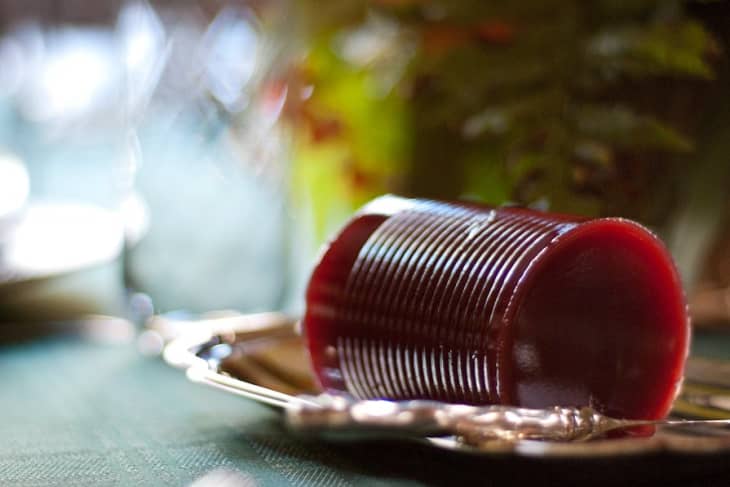How Canned Cranberry Jelly Became a Thanksgiving Icon
The turkey, the mashed potatoes, and the stuffing often get starring roles on the Thanksgiving table, leaving cranberries off to the side as a obligatory “relish.”
But the enduring place of the cranberry at Thanksgiving is anything but happenstance — and canned cranberry jelly, that ever-polarizing ridged and wiggly Thanksgiving dish we know today, has a very specific story born out American agriculture. Do you know why we eat canned cranberry jelly? Let me explain.
Thanksgiving is probably the only time of the year the whole of America sits down together to share a meal. Regardless of the mythology of its beginnings,, the meal is recognized as a time to reflect on the things we’re thankful for and an opportunity to revel in the foods that have become synonymous with the day.
With turkey at its center and the requisite side dishes rippling out in varying degrees of relative importance (mashed potatoes, I’m looking at you), the humble cranberry often gets pushed to the wayside in favor of stuffing or rolls.
So let’s look back at where it came from, and why we so often eat it out of a can.
Cranberries’ Place in North American Food History
The cranberry is native to North America. As a wild perennial, we know that Native Americans used cranberries as both food and medicine. It’s widely accepted that the Pilgrims were introduced to the berry and its many uses by the Native Americans, making the case for cranberries at the first Thanksgiving meal a stronger one.
Cranberries are well-suited to the chilly climate and acidic soil of the Northern hemisphere, and they are grown in Massachusetts, Wisconsin, New Jersey and in parts of Washington and Oregon, with Wisconsin producing more than half of the world’s total crop. Today, cranberry production remains a family affair with some farms going back 10 generations.
→ More cranberry facts: 5 Things You May Not Know About Cranberries
Cranberries as a sauce and accompaniment to meat has been documented as a part of American culinary history as early as the 19th century. Recipes vary with some instructions as simple as “take cranberries and stew with sugar” to more involved productions that mold stewed cranberries into shapes.
The Unique Agriculture of Cranberries
Cranberries, Concord grapes, and blueberries often get lumped together as the only fruits native to North America—but that’s only partially correct. They are the only native North American fruits commercially grown.
And of those three, cranberries were the first to flourish as a commercial crop thanks to innovative growing practices, including the introduction of wet harvesting and the formation of a cooperative of growers we today know as Ocean Spray.
In the 1930s cranberry farming shifted from dry harvesting to wet. Dry harvesting is responsible for the fresh cranberries offered in the produce aisles but it was and remains a labor-intensive affair. The advent of wet harvesting not only increased the efficiency of the bog, it spawned the cranberry industry we know today. When bogs are flooded, cranberries begin to loosen from their vines. Thanks to natural buoyancy caused by four hollow chambers, they float to the surface of the bog where they are mechanically harvested. What would take a couple hundred people to harvest is now done by a handful.
How Wet Harvesting Gave Us Jelly in a Can
Mechanically harvesting cranberries does come with a caveat. The berries are often too imperfect to sell as a fresh product, leaving companies like Ocean Spray to meet this challenge with a solution they had waiting on the bench the whole time: Can ’em.
Ocean Spray had been canning ready-to-serve cranberry jelly since 1912. With a surplus of raw materials on their hand, cranberries finally had an opportunity to develop a market presence with a packaged product that lasted beyond their September through November growing season. Thus cranberry jelly in a can became a fixture on the Thanksgiving table.
There have been some ingredient changes over the years but the process for making jellied cranberry sauce hasn’t changed much. The jelly is still set in the can and the naturally occurring pectin in cranberries cause it to thicken.
Scour the Internet and you find odes to canned jelly, hacks for releasing it from the can, and recipes for homemade versions. As far as its icon status is concerned, it will always have a place on the Thanksgiving table, just in the shadow of everything else.
